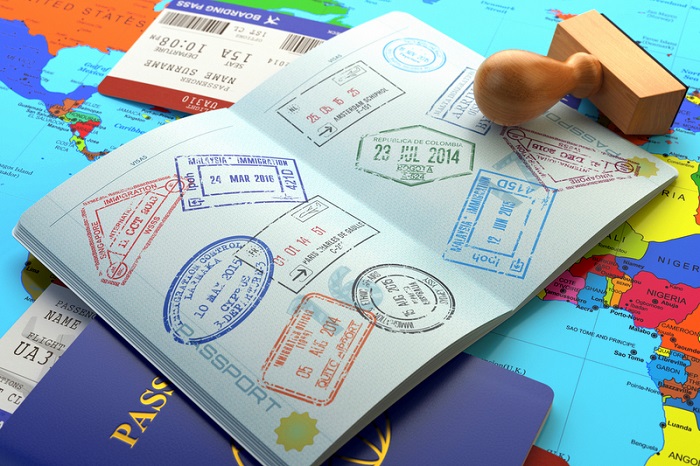Schengen Visa: Everything You Need to Know
If you’re planning a trip to Europe, you’ve probably stumbled across the word “Schengen” at some point during your research. But what is the Schengen Area, exactly? When do you need a Schengen visa to visit Europe and how do you apply? And what, for that matter, is valid Schengen visa insurance?
Don’t worry – we’ve got you covered. From an overview of Schengen travel regulations to the Schengen visa application process, here’s everything you need to know to navigate this tricky European zone.
EU Schengen countries include: Austria, Belgium, Czech Republic, Denmark, Estonia, Finland, France, Germany, Greece, Hungary, Italy, Latvia, Lithuania, Luxembourg, Malta, Netherlands, Poland, Portugal, Spain, Slovakia, Slovenia, Sweden.
Non-EU Schengen countries include: Iceland, Liechtenstein, Norway, Switzerland.
There are only 6 EU countries which are not part of the Schengen Area: Bulgaria, Croatia, Cyprus, Ireland, Romania, and United Kingdom. Citizens of these countries do not need a Schengen visa in order to visit the Schengen Area for up to 90 total days in a 180-day period.
 What is a Schengen Visa and How Does it Work?
What is a Schengen Visa and How Does it Work?
A Schengen visa allows eligible individuals to travel freely within the 26 participating Schengen Area countries. This means travelers will not be subject to border checks at internal Schengen borders.
Border checks remain in place for travelers crossing external borders, however. These are the borders between Schengen and non-Schengen states.
The following individuals are eligible for unrestricted travel in the Schengen Area:
- Schengen-country citizens
- Holders of a residence permit issued by a Schengen country
- EU/EEA citizens
- Non-EU individuals from eligible countries who are not required to obtain a Schengen visa for travel of 90 days or less
- Non-EU individuals with a valid Schengen visa
Additional facts to keep in mind:
- While you may not need a visa, you will need a valid passport to enter any and all Schengen countries.
- If you reside in a non-EU country, you will be required to obtain a stamp on your passport no matter what country you are entering. If you don’t have the stamps in your passport when you try to leave the Schengen Area, you may be required to prove how long you’ve been in Europe.
Who Needs a Schengen Visa?
One of the most important questions to ask yourself is whether or not you need a Schengen visa in order to travel freely throughout the Schengen Area. Schengen visa requirements are primarily based on citizenship and/or residency.
Schengen Visa Required Countries
Citizens of the following countries are *currently required to hold a Schengen visa in order to cross external Schengen borders:
- Afghanistan
- Algeria
- Angola
- Armenia
- Azerbaijan
- Bahrain
- Bangladesh
- Belarus
- Belize
- Benin
- Bhutan
- Bolivia
- Botswana
- Burkina Faso
- Burma/Myanmar
- Burundi
- Cambodia
- Cameroon
- Cape Verde
- Central African Republic
- Chad
- China
- Comoros
- Congo
- Cote D’ivoire
- Cuba
- Democratic Republic Of Congo
- Djibouti
- Dominican Republic
- Ecuador
- Egypt
- Equatorial Guinea
- Eritrea
- Ethiopia
- Fiji
- Gabon
- Gambia
- Ghana
- Guinea
- Guinea-Bissau
- Guyana
- Haiti
- India
- Indonesia
- Iran
- Iraq
- Jamaica
- Jordan
- Kazakhstan
- Kenya
- Kuwait
- Kyrgyzstan
- Laos
- Lebanon
- Lesotho
- Liberia
- Libya
- Madagascar
- Malawi
- Maldives
- Mali
- Mauritania
- Mongolia
- Morocco
- Mozambique
- Namibia
- Nauru
- Nepal
- Niger
- Nigeria
- North Korea
- Oman
- Pakistan
- Papua New Guinea
- Philippines
- Qatar
- Russia
- Rwanda
- Sao Tome And Principe
- Saudi Arabia
- Senegal
- Sierra Leone
- Somalia
- South Africa
- South Sudan
- Sri Lanka
- Sudan
- Suriname
- Swaziland
- Syria
- Tajikistan
- Tanzania
- Thailand
- Togo
- Tunisia
- Turkey
- Turkmenistan
- Uganda
- Uzbekistan
- Vietnam
- Yemen
- Zambia
- Zimbabwe
*As of the European Commission’s Migration and Home Affairs directorate on 11/21/17.
Citizens of the above countries are permitted to travel the Schengen Area for up to 90 total days within a 180-day period if they fulfill the following entry requirements:
- Have a valid passport
- Have a valid Schengen visa
- Have travel medical insurance that meets Schengen visa insurance requirements
- Have documents which prove the purpose and intended duration of their stay
- Have a return ticket or evidence of enough money to buy one.
Schengen Visa Exempt Countries
Citizens of the following countries are currently* exempt from the Schengen visa requirement:
- Albania
- Andorra
- Antigua and Barbuda
- Argentina
- Australia
- Bahamas
- Barbados
- Bosnia and Herzegovina
- Brazil
- Brunei Darussalam
- Canada
- Chile
- Colombia
- Costa Rica
- Dominica
- El Salvador
- Georgia
- Grenada
- Guatemala
- Holy See (Vatican City State)
- Honduras
- Israel
- Japan
- Kiribati
- Macedonia (FYROM)
- Malaysia
- Marshall Islands
- Mauritius
- Mexico
- Micronesia
- Moldova
- Monaco
- Montenegro
- New Zealand
- Nicaragua
- Palau
- Panama
- Paraguay
- Peru
- Samoa
- San Marino
- Seychelles
- Serbia
- Singapore
- Solomon islands
- South Korea
- St. Kitts and Nevis
- St. Lucia
- St. Vincent and the Grenadines
- Timor-Leste
- Tonga
- Trinidad and Tobago
- Tuvalu
- Ukraine
- United Arab Emirates
- United States of America
- Uruguay
- Vanuatu
- Venezuela
*As of the European Commission’s Migration and Home Affairs directorate on 11/21/17.

Other exemptions:
- Hong Kong: Holders of a “Hong Kong Special Administrative Region” passport
- Macao: Holders of a “Região Administrativa Especial de Macau” passport
- UK: British overseas nationals only
Citizens of the above visa-exempt countries are permitted to travel the Schengen Area for up to 90 total days within a 180-day period if they fulfill the following entry requirements:
- Have a valid passport
- Have documents which prove the purpose and intended duration of their stay
- Have a return ticket or evidence of enough money to buy one.
How to Apply for a Schengen Visa?
When to Apply
You must submit your Schengen visa application at least 15 days prior to the start date of your trip, according to the European Commission.
However, the consulate may request additional documentation or need more time to examine your application. That’s why you should plan to apply 30-60 days before the start of your trip.
You cannot submit your application any earlier than 3 months prior to the date you intend to start your trip.
Where to Apply
You should apply for your Schengen visa in the country in which you permanently reside. To apply, schedule an application appointment at the consulate of your main Schengen destination country. You must go to the consulate whose jurisdiction covers your home address.
Some consulates will accept an application if you are legally present but not legally residing in its jurisdiction. However, you must be able to justify why you cannot file your application at the consulate serving your place of residence. The consulate will then determine whether your justification is acceptable and your application should be approved.
IMPORTANT: Your country of citizenship, not your residence, will always determine whether you need a Schengen visa to travel in the Schengen Zone.
Schengen Visa Application Requirements
Schengen visa application requirements can vary slightly by issuing country. For information specific to your main Schengen destination, visit the website serving its Ministry of Foreign Affairs and Immigration or contact your designated consulate.
General Application Requirements
In the meantime, check out our step-by-step walkthrough of the application process or review this list of general Schengen visa application requirements:
- Completed and signedvisa application form(one for each person listed in your travel documents)
- Passport
- must be valid for 3 months after the date you plan to leave the Schengen Area (for a multi-entry visa, must be valid for 3 months after the last day of your final visit)
- must contain at least 2 empty pages
- must be issued in the last 10 years
- Two recent, color photographs that meetICAO requirements
- Fingerprints may be collected from applicants who are not already registered in Europe’s Visa Information System (VIS) or who were entered in the system over 59 months prior to the date of application
- Application and/or service fee payment. Thevisa application feeranges from EUR 35-60 (keep proof of payment)
- Travel medical insurance that meets Schengen visa insurance requirements(consular office may request one-page document stating the dates and scope of coverage)
- Supporting documents which prove:
- the purpose of your travel
- that you have planned for accommodations
- your intentions to return to your country of residence at the end of your trip
- your means of subsistenceNOTE: Children under 18 will also need:
- birth certificate
- consent of parental authority (if traveling with only one parent)
- notarized or certified parental consent (if traveling without parent or legal guardian).

-
Visa Application Fee
Most Schengen visa applicants are required to pay a visa fee when they submit their application. In general, application fees for all types of transit and short-stay visas are as follows:
- Individuals 13 Years and Older: EUR 60 (about USD $70.70)
- Children 6-12 Years Old: EUR 35 (about USD $41.24)
- Children 5 Years and Younger: No Fee
Special Circumstances
If you are a national of a country which has concluded Visa Facilitation Agreements with the EU, the application fee is EUR 35 (USD $41.24). These countries include:
- Albania
- Armenia
- Azerbaijan
- Bosnia and Herzegovina
- Cape Verde
- Former Yugoslav Republic of Macedonia
- Georgia
- Moldova
- Montenegro
- Serbia
- Russia
- Ukraine
If you are applying for a national long-stay visa, contact the issuing consulate for visa fee information. Be sure to keep proof of payment.
Application Fee Exemptions
The application fee is waived for individuals who fall into these categories:
- Students and teachers who are visiting the Schengen Area for the purpose of studying or partaking in educational training
- Researchers from non-Schengen countries traveling to the Schengen Area to perform scientific research
- Representatives of non-profit organizations who are 25 years old or younger and participating in events organized by non-profits
- Family members of EU/EEA citizens who fall under Directive 2004/38
NOTE: Individual Schengen states may offer additional visa fee waivers, so check with the consulate where you plan to apply. Also note that visa fees for denied or withdrawn applications are non-refundable.
3 Main Types of Short-Stay Visas:
1. Airport Transit Visa (Type A)
This visa allows you to await a connecting flight from one non-Schengen country to another in the international transit area of a Schengen-located airport. It does not allow you to leave the airport or enter Schengen territory for any reason (such as an overnight hotel stay).
According to the European Union, citizens of some countries must have an airport transit visa when traveling through an airport in any Schengen state while citizens of other countries must have an airport transit visa when traveling through airports in some Schengen states.
And still others are exempt from the airport transit visa requirement as a whole.
2. Transit Visa (Type B)
The transit visa allows you to pass through the territory of a Schengen state (or states) to get from one non-Schengen country to another via car or coach.
You may also need a transit visa for plane travel if your trip requires you to leave the airport’s international transit area to enter Schengen territory (say you’re continuing your journey via train or your next flight isn’t until morning and you plan to spend the night in a hotel).
You can acquire a transit visa for one, two, or multiple transits, as long as the time spent in the Schengen Area for each transit is no more than 5 days.
3. Short-Stay or Travel Visa (Type C)
This is the visa travelers typically have in mind when they reference a “Schengen visa.” Issued for purposes such as tourism, sporting events, cultural events, and visits with relatives, this visa allows individuals to visit one or more Schengen countries for up to 90 days in any 6-month period. You may obtain a visa for single entry, double entry, or multiple entries.
Other Short-Stay Visas:
4. Limited Territorial Validity (LTV)
The LTV visa is issued only in special cases, such as for humanitarian reasons. It can be applied as a transit or short-stay visa – its duration may vary.
5. Group Visa
This visa is issued to groups of 5 to 30 people who fulfill certain requirements (such as a trip length of 30 or fewer days). It may be applied as an airport, transit, or short-stay visa.
History of the Schengen Area
If you’re not at all familiar with the Schengen Area (or the Schengen Zone, as it’s sometimes called), here’s what you need to know:
In 1985, five European Union (EU) countries pledged to eliminate internal border controls. Belgium, Germany, France, Luxembourg, and the Netherlands signed the Schengen Agreement, and the Schengen Area was born.
Five years later, these countries signed again to officially implement the agreement, and in 1995 border controls between the nations were effectively abolished.
Named after the village in Luxembourg where its borders meet those of Germany and France, the Schengen Agreement cemented the rights of Schengen-country nationals and EU citizens to travel freely within the participating area countries.
Today, 26 Schengen countries (Schengen states) make up the Schengen Area, which sees about 1.25 billion visits each year from Europeans alone.



















